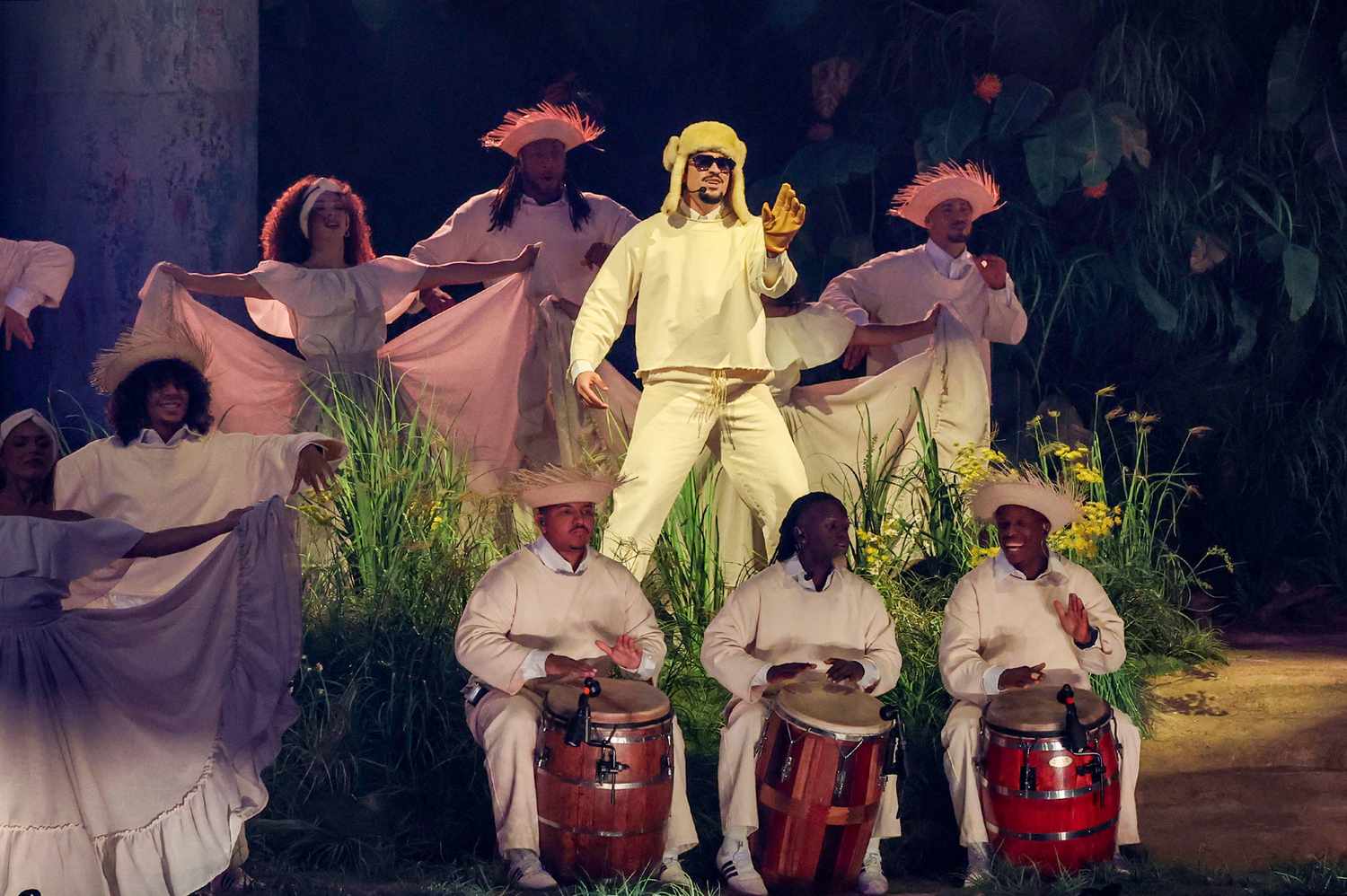:max_bytes(150000):strip_icc():format(jpeg)/TAL-header-bad-bunny-puerto-rico-residence-BADBUNNYPR0925-12e9fc2f9d954f15b708308a647ce667.jpg)
Over the past decade, Puerto Rican megastar Bad Bunny has emerged as one of the island’s most outspoken cultural ambassadors. While he’s broken global records and helped push Latin pop music into the mainstream, he’s also made it his mission to preserve and promote Puerto Rico’s cultural legacy.
His latest album, I had to throw more photos (released in January), builds on that mission. Through its lyrics, he explores issues impacting the island, like gentrification, overtourism, and the tensions between locals and visitors. While he celebrates Puerto Rico’s beauty, he also warns against tourism that threatens the very culture people come to experience. On tracks like “Lo Que Le Pasó a Hawaii,” he openly acknowledges the harmful impact of unchecked tourism.
As Puerto Rico’s unofficial artistic ambassador, Bad Bunny’s vision is clear to those paying attention: move beyond the surface-level tourism and embrace deeper, community-driven travel. He promotes a more intentional approach that invests in Puerto Rico and celebrates its vibrant heritage beyond its most popular attractions.
To bring that to life, he launched “I don’t want to go from here” (“I Don’t Want to Leave Here”)—a 10-week residency at the José Miguel Agrelot Coliseum in San Juan. The show sold out 33 nights and is projected to generate over $200 million, making it one of the most lucrative musical events in the island’s history.
But this residency is about more than music—it’s a blueprint for responsible tourism.
A Residency That Raises Awareness
Ricardo Arduengo/Getty Images
From the start, Bad Bunny used the residency to spotlight local talent and small businesses. His styling team, for example, collaborated with Puerto Rican designers like Yazmín “Yayi” Perez, who created a series of custom guayaberas (traditional linen shirts) for his performances. For Perez, the effect has been staggering: demand is up 1,000 percent and tourists are flocking to her namesake This Perez boutique to shop locally and learn about the island’s sartorial heritage.
At the venue, nonprofit pop-ups and pre-show activations raise awareness for local causes. One collaboration featured sustainability group Casa Pueblo and researchers from the University of Puerto Ricowho educated concertgoers about renewable energy and offered merchandise to support their initiatives. These efforts give visitors new awareness of the homegrown organizations doing vital nonprofit work across Puerto Rico, as well as a way to support meaningful work happening on the island.
Small Businesses Reap Big Benefits
Tourism organizations across the island are following Bad Bunny’s lead, using the concert buzz to direct visitors to locally-owned small businesses across Puerto Rico and drive tourism beyond San Juan. Take Discover Puerto Rico (DPR), which curated guides to connect travelers to restaurants, shops, cultural experiences, and local entrepreneurs across all 78 municipalities in Puerto Rico.
“From the moment the residency was announced, we recognized the opportunity for local businesses to benefit,” Glorianna Yamín, DPR’s vice president of marketing, told Travel + Leisure. “Our priority was ensuring that the economic impact of this increased visitation extended beyond San Juan and into communities across the Island.”
Sophia Kravets/Travel + Leisure
According to Yamín, the “Live Boricua” campaign—DPR’s effort to spotlight authentic Puerto Rican culture—helped shape itineraries like the “3-Day Puerto Rico Itinerary for Concertgoers & Music Lovers” and “10 Things to Do in Puerto Rico When Visiting for a Concert.” Featured businesses include the Doña Caridad Brenes de Cepeda School of Bomba and Flena; La Factoria, one of Puerto Rico’s most famous bars; C Note Jazz Club in Luquillo, where visitors can listen to the underrated-yet-exceptional Jazz talent of the island; and salsa tours in Ponce led by Caribbean island.
One standout is Puerto Rican-owned lifestyle brand Rogativewhich partnered with artisans from the mountain town of Utuado to create a residency-related merch line dubbed the The residence collection. Designs are inspired by Bad Bunny’s iconography, featuring cultural symbols like Pavas (traditional hats worn by rural sugarcane farmers) and Monobloc chairs seen in everyday Puerto Rican life in backyards across the island—and featured on the cover of I had to throw more photos.
Sales jumped nearly 40 percent since the concerts began, according to Rogative founder Gloriana López-Lay. “ People are wearing our scarves at the concerts. You can see people wearing them as shirts or head scarves or even as little purses,” she told T+L, noting how the fashion choices are sparking deeper conversations about Puerto Rican identity. “If you’ve seen some of the videos that have come out on TikTok, people are dressing up differently for the concerts and wearing our products, which also pays homage to our culture and what Puerto Rico is all about.”
Restaurants like The white house, Cayo Caribeand Chotis en avilaall located near the concert venue, also tapped into the residency, using visual themes from the album to market to concertgoers on social media.
Beyond boosting small businesses, the residency has inspired a wave of thematic tours that reflect Puerto Rico’s complex reality. In San Juan, nonprofit G8 launched $25 guided bike tours based on the album, using Bad Bunny’s lyrics to teach about gentrification’s impact on local communities.
Another standout is a partnership between community empowerment group Courageous actionBad Bunny-affiliated music group Los Pleneros de la Cresta, and tour operator Sofrito Tourswho created Café con Ron, a cultural tour between the northeastern city Bayamón and Ciales, a rural coffee-producing mountain town. The tour dives into Puerto Rico’s Afro-Caribbean and rural roots, using music to highlight the island’s racial and cultural diversity.
These experiences offer more than sightseeing—they create space for island residents to have real conversations about the realities of living on the island, and let travelers have a more meanginful understanding of the region.
A New Wave of Historical Tourism
Bad Bunny’s influence has also revived interest in Puerto Rican history. Earlier this year, he released a series of lyric videos featuring mini-history lessons by Jorell Meléndez-Badillo, an assistant professor of Latin American and Caribbean history at the University of Wisconsin–Madison. These visualizers spotlighted key moments in the island’s socio-political history.
One video for the song Touristfor instance, focused on Lares, the site of the 1868 Grito de Lares revolt against Spanish rule. Interest in the town—and its landmark Plaza de la Revolución—surged this summer as fans followed his historical trail across the island. By encouraging tourists to visit Puerto Rico’s lauded heritage sites, Bad Bunny is uplifting narratives about the community and their power that recontextualize the island as a place for visitors from across the globe to celebrate.
Bad Bunny’s guiding ethos—“De Puerto Rico al Mundo” (From Puerto Rico to the World)—isn’t just a catchphrase. It’s a call to action for visitors: come to Puerto Rico not just to see it, but to understand it, support it, and celebrate its people. If there’s one takeaway from his residency, it’s this: responsible tourism isn’t just about where you go—it’s about how you go. And thanks to Bad Bunny, thousands of travelers are learning how to do it right.





